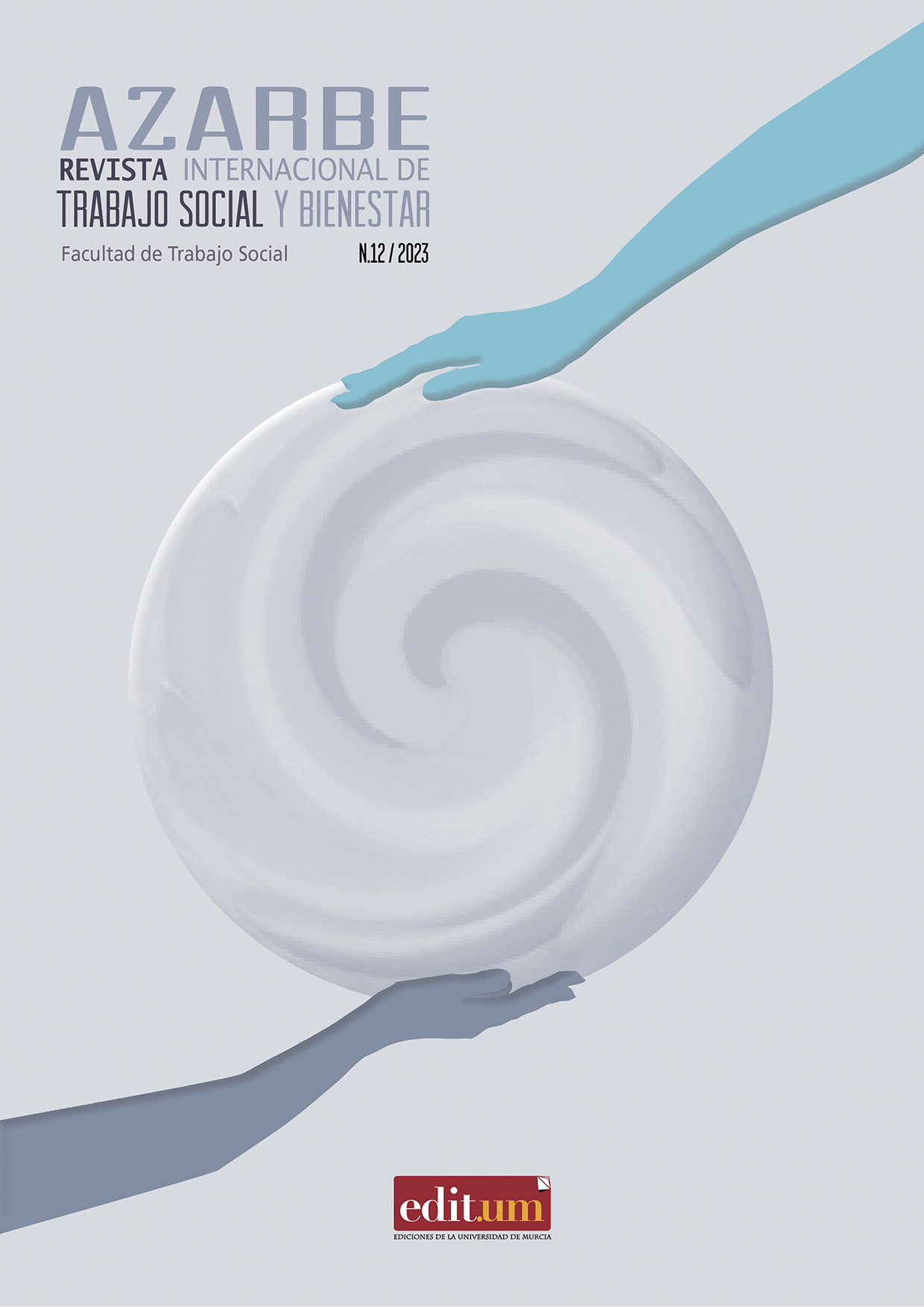El Marco Nopal: Un Marco Heurístico para Entender el Racismo en el Contexto de México
Resumen
El tema del racismo en México ha estado marcado por una atención esporádica y una falta de investigación sostenida y exhaustiva. Además, la literatura ha descuidado en gran medida el concepto de encarnación del racismo, una dimensión crítica que explora cómo las desigualdades sistémicas se manifiestan en resultados fisiológicos y psicológicos tangibles. Esta brecha no solo limita nuestra comprensión de los múltiples impactos del racismo, sino que también obstaculiza el desarrollo de intervenciones integrales de políticas sociales y de salud para abordar sus daños. Basándose en la metáfora del nopal, profundamente arraigada en la cultura mexicana, el marco examina el racismo a través de tres dimensiones clave: el racismo cotidiano abierto (“Racismo Cotidiano y Visible”), el racismo sistémico (“Racismo Sistémico”) y la experiencia encarnada de racismo (“Racismo Encarnado”). Utilizando un enfoque interdisciplinario, el marco sirve como hoja de ruta para una amplia gama de preguntas y metodologías de investigación. Es importante destacar que enfatiza la necesidad de una investigación participativa, basada en el universo de comunidades objeto de estudio e intervención, para garantizar resultados culturalmente sensibles y directamente aplicables. El marco nopal tiene como objetivo proporcionar una comprensión matizada de las complejidades del racismo en México, ofreciendo vías para estudios empíricos e intervenciones con participación comunitaria.
Descargas
-
Resumen699
-
pdf604
Citas
Andrade Benítez, C. (2022). El racismo en las escuelas mexicanas es un micro reflejo del racismo en México. Revista Construyendo Paz Latinoamericana. 15, 214–221.
Arceo-Gómez, E.O., & Campos-Vázquez, R.M. (2019). Double discrimination: Is discrimination in job ads accompanied by discrimination in callbacks? Journal of Economics, Race, and Policy, 2(4), 257–268. https://doi.org/10.1007/s41996-019-00031-3
Barrón Pastor, J.C. (2008). Promoviendo relaciones interculturales? Racismo y acción afirmativa en México para indígenas en educación superior. Trace. Travaux et Recherches Dans Les Amériques Du Centre, 53, 22–35.
Bourabain, D., & Verhaeghe, P.P. (2021). The conceptualization of everyday racism in research on the mental and physical health of ethnic and racial groups: A systematic review. Journal of Racial and Ethnic Health Disparities, 8, 648–660.
Braveman, P.A., Arkin, E., Proctor, D., Kauh, T., & Holm, N. (2022). Systemic and structural racism: Definitions, examples,
health damages, and approaches to dismantling. Health Affairs, 41(2), 171–178. https://doi.org/10.1377/hlthaff.2021.01394
Brownlow, B.N. (2023). How racism “gets under the skin”: An examination of the physical- and mental-health costs of culturally compelled coping. Perspectives on Psychological Science, 18(3), 576–596. https://doi.org/10.1177/17456916221113762
Buchanan, N. T., Perez, M., Prinstein, M.J., & Thurston, I.B. (2021). Upending racism in psychological science: Strategies to change how science is conducted, reported, reviewed, and disseminated. American Psychologist, 76, 1097–1112. https://doi.org/10.1037/amp0000905
Campos-Vazquez, R. M., & Medina-Cortina, E. M. (2019). Skin color and social mobility: Evidence from Mexico. Demography,
(1), 321–343.
Charles, J. (2021). Colorism and the Afro-Latinx experience: A review of the literature. Hispanic Journal of Behavioral Sciences, 43(1–2), 8–31. https://doi.org/10.1177/07399863211027378
Comisión Económica para América Latina y el Caribe. (2020). El impacto del COVID-19 en los pueblos indígenas de América Latina-Abya Yala: Entre la invisibilización y la resistencia colectiva. https://www.cepal.org/es/publicaciones/
-impacto-covid-19-pueblos-indigenas-america-latina-abya-yala-la-invisibilizacion
Danese, A., Caspi, A., Williams, B., Ambler, A., Sugden, K., Mika, J., Werts, H., Freeman, J., Pariante, C., Moffitt, T. & Arseneault, L. (2011). Biological embedding of stress through inflammation processes in childhood. Molecular Psychiatry, 16(3), 244–246.
Del Toro, J., & Wang, M.-T. (2022). The roles of suspensions for minor infractions and school climate in predicting academic performance among adolescents. American Psychologist, 77(2), 173–185. https://doi.org/10.1037/amp0000854
Delgadillo, V. (2011). Indígenas, vivienda y trabajo en el centro histórico de la ciudad de México. Territorios y Sociedades en un Mundo en Cambio, 219.
Dörr, N. M., & Dietz, G. (2020). Racism against Totonaco women in Veracruz: Intercultural competences for health professionals are necessary. PLOS ONE, 15(1), e0227149. https://doi.org/10.1371/journal.pone.0227149
Feagin, J., & Bennefield, Z. (2014). Systemic racism and US health care. Social Science & Medicine, 103, 7–14.
FitzGerald, C., & Hurst, S. (2017). Implicit bias in healthcare professionals: A systematic review. BMC Medical Ethics,18, 19. https://doi.org/10.1186/s12910-017-0179-8
Guidi, J., Lucente, M., Sonino, N., & Fava, G. A. (2020). Allostatic load and its impact on health: A systematic review. Psychotherapy and Psychosomatics, 90(1), 11–27.
Hall, W. J., Chapman, M. V., Lee, K. M., Merino, Y. M., Thomas, T. W., Payne, B. K., Eng, E., Day, S. H., & Coyne-Beasley, T. (2015). Implicit racial/ethnic bias among health care professionals and its influence on health care outcomes: A systematic review. American Journal of Public Health, 105(12), e60–e76. https://doi.org/10.2105/AJPH.2015.302903
Hamilton, D. L., & Sherman, J. W. (2014). Stereotypes. In Handbook of Social Cognition (pp. 17–84). Psychology Press.
Hernández, S. M. (2020). El Acuerdo de París sobre cambio climático y el proyecto de la ley marco en Chile: Entre el protagonismo y la denegación de los pueblos indígenas. Anuario de Derechos Humanos, 141–153.
Horbath Corredor, J. E. (2021). La probabilidad de contagio y deceso por COVID-19 en pacientes indígenas y no indígenas iniciando la pandemia en México. Apuntes Del CENES, 40(72), 205–232.
Horbath, J. (2008). La discriminación laboral de los indígenas en los mercados urbanos de trabajo en México: Revisión y balance de un fenómeno persistente. Pobreza, Exclusión Social y Discriminación Étnico-Racial En América Latina y El Caribe, 25, 25–52.
Ibarra-Mejia, G., Lusk, M., & Jeon, S. (2022). Stress, anxiety and depression among Latinx university students during the COVID-19 pandemic. Social Development Issues, 43(1), Article 1. https://doi.org/10.3998/sdi.1815
Jones. (2000). Levels of racism: A theoretic framework and a gardener’s tale. American Journal of Public Health, 90(8),1212–1215. https://doi.org/10.2105/AJPH.90.8.1212
Koester, A. (2016). Educación asequible, accesible, aceptable y adaptable para los pueblos indígenas en México: Una revisión estadística. Alteridad, 11(1), 33–52.
Kraft, P., & Kraft, B. (2021). Explaining socioeconomic disparities in health behaviours: A review of biopsychological pathways involving stress and inflammation. Neuroscience & Biobehavioral Reviews, 127, 689–708. https://doi.org/10.1016/j.neubiorev.2021.05.019
Krieger, N. (2005). Stormy Weather: Race, gene expression and the science of health disparities. American Journal of Public Health, 95(12), 2155–2160. https://doi.org/10.2105/AJPH.2005.067108
Krieger, N. (2021). Structural racism, health inequities, and the two-edged sword of data: Structural problems require structural solutions. Frontiers in Public Health, 9. https://www.frontiersin.org/articles/10.3389/fpubh.2021.655447
Krieger, N., Kosheleva, A., Waterman, P. D., Chen, J. T., & Koenen, K. (2011). Racial discrimination, psychological distress, and self-rated health among US-born and foreign-born Black Americans. American Journal of Public Health, 101(9), 1704–1713. https://doi.org/10.2105/AJPH.2011.300168
Lazcano, F. de J. M., & Muñiz, C. (2012). Estereotipos mediáticos de los indígenas. Análisis de las representaciones en programas de ficción y entretenimiento de televisoras en Nuevo León. Razón y Palabra, 80.
Leyva-Flores, R., Infante-Xibille, C., & Pablo Gutiérrez, J. (2013). Inequidad persistente en salud y acceso a los servicios para los pueblos indígenas de México, 2006-2012. Salud Pública de México, 55(Supl.2), 123. https://doi.org/10.21149/spm.v55s2.5107
MacIntyre, M.M., Zare, M., & Williams, M.T. (2023). Anxiety-related disorders in the context of racism. Current Psychiatry Reports, 25(2), 31–43. https://doi.org/10.1007/s11920-022-01408-2
Marín, R.B., & Sánchez, E.I.G. (2018). El racismo judicial en México. Análisis de sentencias y representación de la diversidad. Pluralidad y Consenso, 8(36), 166–169.
McEwen, B.S. (2004). Protection and damage from acute and chronic stress: Allostasis and allostatic overload and relevance to the pathophysiology of psychiatric disorders. Annals of the New York Academy of Sciences, 1032(1), 1–7.
McEwen, B.S., & Karatsoreos, I.N. (2020). What Is Stress? In A. Choukèr (Ed.), Stress Challenges and Immunity in Space: From Mechanisms to Monitoring and Preventive Strategies (pp. 19–42). Springer International Publishing.https://doi.org/10.1007/978-3-030-16996-1_4
Mekawi, Y., Heller, W., & Hunter, C.D. (2022). The costs of anticipating and perseverating about racism: Mechanisms of the associations between racial discrimination, anxious arousal, and low positive affect. Cultural Diversity and Ethnic Minority Psychology, 28(4), 544.
Nelson, T., Brown, M.J., Garcia-Rodriguez, I., & Moreno, O. (2023). Gendered racism, anxiety, and depression: The mediating roles of gendered racialized stress and social isolation. Ethnicity & Health, 28(1), 12–28. https://doi.org/10.1080/13557858.2021.2002826
Okonofua, J.A., Walton, G.M., & Eberhardt, J.L. (2016). A vicious cycle: A social–psychological account of extreme racial disparities in school discipline. Perspectives on Psychological Science, 11(3), 391–398. https://doi.org/10.1177/1745691616635
Phelan, S. M., Dovidio, J. F., Puhl, R. M., Burgess, D. J., Nelson, D. B., Yeazel, M. W., Hardeman, R., Perry, S., & van Ryn, M. (2014). Implicit and explicit weight bias in a national sample of 4,732 medical students: The medical student CHANGES study. Obesity, 22(4), 1201–1208. https://doi.org/10.1002/oby.20687
Pichardo, C. M., Molina, K. M., Rosas, C. E., Uriostegui, M. & Sanchez-Johnsen, L. (2021). Racial discrimination and depressive symptoms among Latina/o college students: The role of racism-related vigilance and sleep. Race and Social Problems, 13(2), 86–101. https://doi.org/10.1007/s12552-020-09304-1
Reeskens, T., & Velasco Aguilar, R. (2021). Being white is a full time job? Explaining skin tone gradients in income in Mexico.
Journal of Ethnic and Migration Studies, 47(1), 46–68. https://doi.org/10.1080/1369183X.2020.1775071
Selvarajah, S., Maioli, S. C., Abi Deivanayagam, T., de Morais Sato, P., Devakumar, D., Kim, S.-S., Wells, J. C., Yoseph, M., Abubakar, I., & Paradies, Y. (2022). Racism, xenophobia and discrimination: Mapping pathways to health outcomes. The Lancet, 400(10368), 2109–2124.
Sue, D. W., Capodilupo, C. M., Torino, G. C., Bucceri, J. M., Holder, A., Nadal, K. L., & Esquilin, M. (2007). Racial microaggressions
in everyday life: Implications for clinical practice. American Psychologist, 62(4), 271.
Torres Falcón, M. (2016). El nuevo rostro de un viejo fenómeno: La trata de personas con fines de explotación sexual y los derechos humanos. Sociológica, 31(89), 95–129.
Ullmann, E., Perry, S. W., Licinio, J., Wong, M.-L., Dremencov, E., Zavjalov, E. L., Shevelev, O. B., Khotskin, N. V., Koncevaya, G. V., & Khotshkina, A. S. (2019). From allostatic load to allostatic state—an endogenous sympathetic strategy to deal with chronic anxiety and stress? Frontiers in Behavioral Neuroscience, 13, 47.
Velasco-Yáñez, D. (2017). La discriminación nuestra de cada día. Xipe Totek, 26(103), 310+.
Villarreal, A. (2010). Stratification by skin color in contemporary Mexico. American Sociological Review, 75(5), 652–678. https://doi.org/10.1177/0003122410378232
Villarreal, A., & Bailey, S. R. (2020). The endogeneity of race: Black racial identification and men’s earnings in Mexico.Social Forces, 98(4), 1744–1772.
Walker, A. (1983). In Search of Our Mothers’ Gardens: Womanist Prose. Houghton Mifflin Harcourt.
Williams, D. R., Lawrence, J. A., & Davis, B. A. (2019). Racism and health: Evidence and needed research. Annual Review of Public Health, 40(1), 105–125. https://doi.org/10.1146/annurev-publhealth-040218-043750
Williams, M. T., Osman, M., Gran-Ruaz, S., & Lopez, J. (2021). Intersection of racism and PTSD: Assessment and treatment of racial stress and trauma. Current Treatment Options in Psychiatry, 8(4), 167–185. https://doi.org/10.1007/s40501-021-00250-2
Wylie, L., & McConkey, S. (2019). Insiders’ insight: Discrimination against indigenous peoples through the eyes of health care professionals. Journal of Racial and Ethnic Disparities, 6(1), 37–45.
Derechos de autor 2023 AZARBE, Revista Internacional de Trabajo Social y Bienestar

Esta obra está bajo una licencia internacional Creative Commons Atribución-NoComercial-SinDerivadas 4.0.
Las obras que se publican en esta revista están sujetas a los siguientes términos:
1. El Servicio de Publicaciones de la Universidad de Murcia (la editorial) conserva los derechos patrimoniales (copyright) de las obras publicadas, y favorece y permite la reutilización de las mismas bajo la licencia de uso indicada en el punto 2.
2. Las obras se publican en la edición electrónica de la revista bajo una licencia Creative Commons Reconocimiento-NoComercial-SinObraDerivada 3.0 España (texto legal). Se pueden copiar, usar, difundir, transmitir y exponer públicamente, siempre que: i) se cite la autoría y la fuente original de su publicación (revista, editorial y URL de la obra); ii) no se usen para fines comerciales; iii) se mencione la existencia y especificaciones de esta licencia de uso.
3. Condiciones de auto-archivo. Se permite y se anima a los autores a difundir electrónicamente las versiones pre-print (versión antes de ser evaluada) y/o post-print (versión evaluada y aceptada para su publicación) de sus obras antes de su publicación, ya que favorece su circulación y difusión más temprana y con ello un posible aumento en su citación y alcance entre la comunidad académica. Color RoMEO: verde.














